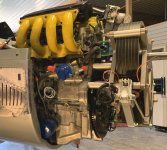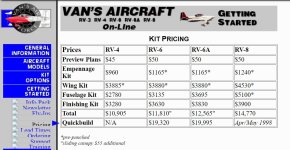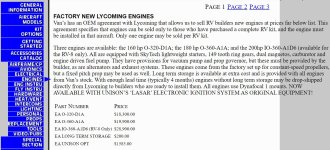Bulls vs Bears.
I think Lycoming is great, but I don't buy the idea that it's the perfect engine. Better solutions are waiting to be created. And monopiles suck and stifle innovation. And competition is good for us. Demand exists. And engine, material and manufacturing tech is advancing rapidly.
For example, check out what Koenigsegg is doing with Freevalve technology.
https://www.youtube.com/watch?v=S3cFfM3r510. It essentially eliminates the valvetrain. Lighter, more efficient, more control over the combustion cycle, more power. Think about that in an aviation application. No cam, no gears, no pushrods, no lifters, more compact etc.
It just comes down to willpower, approach and $$$$. Design, prototyping and testing aside, I think clean sheet engine companies simply underestimate the cost to get it over the finish line. Bad or naïve business planning. Or bad designs.
Until an engine has proof of reliable operation and support in the field, the only reason buyers might consider a clean sheet design over the incumbent is cost savings. Risk vs reward. A new engine builder needs to be prepared to sell at a major discount to get enough engines in the air to prove the design. Or look at other markets like UAVs to prove out the reliability without risking lives.
What buyers struggle with is, how much of a discount is enough to stray from the proven design? The primary motivator when choosing an engine is obviously reliability and safety. New buyers will be test pilots until there are tens of thousands of hours flown. In higher HP ranges, this class of engine is for traveling with passengers and IFR machines where risk is even less tolerated than sport classes.
It then comes down to, how many engines need to be flying around, and how many hours is enough hours to convince buyers that you have a reliable design? This is totally subjective, but personally knowing there are 100+ engines in the field flying reliably and making headway toward a TBO number would be enough to convince me it’s a good idea. 100 seems like a psychologically convincing number whether it has any statistical relevance or not. So basically heavily discounting and supporting the first 100 motors needs to be part of the cost calculation. Otherwise people will just buy new, old stuff.
Finally, there will no doubt be changes needed over time and the question is, how challenging/costly will it be to have something corrected when a problem does arise? Even the big two are not immune. Counterweight clips?
So how much money would a program like that take? $50m, $100m, $250m? If the government is really interested in eliminating lead, lowering emissions and increasing efficiency, $250m is a mouse fart. The cost of $8-10 per gallon 100UL is incentive enough to create demand for engines that run on $3-4 mogas.








